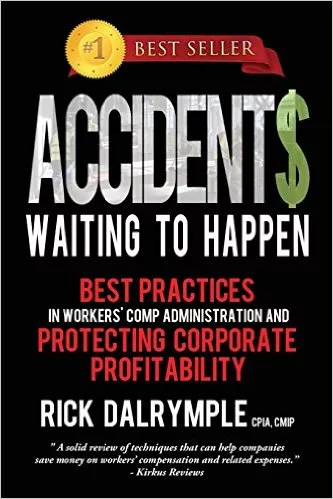‘OUCH! I Overpaid $3.5 Million in Taxes!'
Probably a business owner’s largest asset is
trapped in his or her illiquid business. Monetizing that wealth likely will be
the largest financial event of the business owner’s life. This transaction will
include three parties: the seller, the buyer and Uncle Sam. So, come to
understand this: “It is not how much you make, but how much you keep.”

Probably a business owner’s largest asset is trapped in his or her illiquid business. Monetizing that wealth likely will be the largest financial event of the business owner’s life. This transaction will include three parties: the seller, the buyer and Uncle Sam. So, come to understand this: “It is not how much you make, but how much you keep.” My true story will bring this into perspective.
I was at an old friend’s daughter’s out-of-state wedding, and he introduced me to a specialty contractor in his late 60s who was in year nine of a 10-year buyout to his son. We talked construction, and I asked him how he structured the deal with the selling of his S corporation. I listened as he proudly told me that he grossed up his son’s salary and his son bought the stock, without going to the bank for any loan, for $4 million.
He knew I was in the exit planning business and asked me what I thought. I took him aside, took out my pen and napkin, and sketched a hypothetical deal of $1 million to illustrate this:
• Son must earn $1.666 million to net $1 million [40 percent tax (35 percent federal + 5 percent state) on $1.6 million = $1 million] - this does not include payroll and other burdens.
• Son pays dad $1 million to net $800,000 (15 percent capital gains + 5 percent state = 20 percent).
• Translation: Pay $866 in taxes to net $800,000 for a $1 million stock price.
• The $4 million deal is now $3.464 million in taxes to net $3.2 million - CRAZY!
Now, just imagine if the father has other large assets and this money is not protected in his estate planning. The next day the proverbial red truck hits dad. And who knows what happens in 2011, but Uncle Sam could come in for another 40 percent haircut to reduce the $3.2 million to $1.92 million.
OUCH! But the owner understood the figures on the napkin and asked me what I would have recommended. He knew I was not an attorney, accountant or tax adviser but that I work with them. I asked him some qualifying questions and explained that my customers’ deals look a lot different and my owners experience minimal taxes on the exits. He asked, “What do you mean by minimal?” and I said, “Less that 1 percent.”
I could see the blood draining out of his face. I did not mean to ruin his day, but he spent $3.5 million to get $3.2 million, and we could have structured a deal to net $4 million with less that 1 percent ($40,000) - or more than $3.4 million savings in taxes. Essentially, all the money to pay for this comes from the company and could have been put to much better use. Unfortunately, I see this type of scenario too often.
First, we recapitalize the owner’s common stock by exchanging it for voting and nonvoting stock. The owner keeps 1 percent of the voting stock and uses the 99 percent nonvoting stock for the transfer. The recapitalization is essentially tax-free and works with both C and S corporations.
Next, a special kind of trust is set up in which the owner can sell (transfer) the nonvoting shares to the buyer in a structured sale during a period of years. The owner can maintain control of the company by keeping the 1 percent voting stock and sell/transfer the nonvoting shares through the entire transaction. If the trust is properly written/structured, the owner can sell/transfer to his or her children or management essentially in a tax-free transaction. This type of trust works best when a business is worth $2 million or more.
Of course, it is much more complicated than my explanation, but you get the bird’s-eye view.
In his book Good to Great, Jim Collins discusses the difference between good and great companies, schools, teachers, doctors and lawyers. There is a measurable difference that can be personalized if you ever have considered surgery, for example. You definitely want a great surgeon from a great research hospital who routinely performs the complex surgery you are having performed. I am more than willing to travel for a great surgeon to reduce my risk of a negative outcome.
The same analogy works with your exit where a team of attorneys, accountants, insurance advisers, trust attorneys, valuators, financial planners, etc., who are quarterbacked by an exit planner, taking a holistic approach to your goals to find the most efficient way for you to protect your wealth and leverage the value of your business. Remember, it is not how much you make on your sale, but how much you keep.
I learned from my personal business exit, and wish I knew then what I know now. Just for the record, our management team made our share of mistakes exiting our 200-employee specialty contracting roofing business (roofing). First, we spent more than a quarter of a million dollars in the late 90s wandering the exit path with merger and acquisition consolidators, private equity groups and ESOP advisers and settled on a management buyout. With an experienced exit planner, that cost could have been reduced 70 percent and produced a holistic report laying out our options, bottom line after tax pricing, income replacement, and estate issues.
Further, we made tax mistakes but did not take the haircut of my new wedding friend above. You simply don’t know what you don’t know. We had good - though not great - advisers with good intentions and with whom we had long relationships. Great advisers could have created a bundle of savings for our owners and company.

Probably a business owner’s largest asset is trapped in his or her illiquid business. Monetizing that wealth likely will be the largest financial event of the business owner’s life. This transaction will include three parties: the seller, the buyer and Uncle Sam. So, come to understand this: “It is not how much you make, but how much you keep.” My true story will bring this into perspective.
I was at an old friend’s daughter’s out-of-state wedding, and he introduced me to a specialty contractor in his late 60s who was in year nine of a 10-year buyout to his son. We talked construction, and I asked him how he structured the deal with the selling of his S corporation. I listened as he proudly told me that he grossed up his son’s salary and his son bought the stock, without going to the bank for any loan, for $4 million.
He knew I was in the exit planning business and asked me what I thought. I took him aside, took out my pen and napkin, and sketched a hypothetical deal of $1 million to illustrate this:
• Son must earn $1.666 million to net $1 million [40 percent tax (35 percent federal + 5 percent state) on $1.6 million = $1 million] - this does not include payroll and other burdens.
• Son pays dad $1 million to net $800,000 (15 percent capital gains + 5 percent state = 20 percent).
• Translation: Pay $866 in taxes to net $800,000 for a $1 million stock price.
• The $4 million deal is now $3.464 million in taxes to net $3.2 million - CRAZY!
Now, just imagine if the father has other large assets and this money is not protected in his estate planning. The next day the proverbial red truck hits dad. And who knows what happens in 2011, but Uncle Sam could come in for another 40 percent haircut to reduce the $3.2 million to $1.92 million.
OUCH! But the owner understood the figures on the napkin and asked me what I would have recommended. He knew I was not an attorney, accountant or tax adviser but that I work with them. I asked him some qualifying questions and explained that my customers’ deals look a lot different and my owners experience minimal taxes on the exits. He asked, “What do you mean by minimal?” and I said, “Less that 1 percent.”
I could see the blood draining out of his face. I did not mean to ruin his day, but he spent $3.5 million to get $3.2 million, and we could have structured a deal to net $4 million with less that 1 percent ($40,000) - or more than $3.4 million savings in taxes. Essentially, all the money to pay for this comes from the company and could have been put to much better use. Unfortunately, I see this type of scenario too often.
A Better Plan
What would our plan look like from the beginning? The following is a simple explanation.First, we recapitalize the owner’s common stock by exchanging it for voting and nonvoting stock. The owner keeps 1 percent of the voting stock and uses the 99 percent nonvoting stock for the transfer. The recapitalization is essentially tax-free and works with both C and S corporations.
Next, a special kind of trust is set up in which the owner can sell (transfer) the nonvoting shares to the buyer in a structured sale during a period of years. The owner can maintain control of the company by keeping the 1 percent voting stock and sell/transfer the nonvoting shares through the entire transaction. If the trust is properly written/structured, the owner can sell/transfer to his or her children or management essentially in a tax-free transaction. This type of trust works best when a business is worth $2 million or more.
Of course, it is much more complicated than my explanation, but you get the bird’s-eye view.
In his book Good to Great, Jim Collins discusses the difference between good and great companies, schools, teachers, doctors and lawyers. There is a measurable difference that can be personalized if you ever have considered surgery, for example. You definitely want a great surgeon from a great research hospital who routinely performs the complex surgery you are having performed. I am more than willing to travel for a great surgeon to reduce my risk of a negative outcome.
The same analogy works with your exit where a team of attorneys, accountants, insurance advisers, trust attorneys, valuators, financial planners, etc., who are quarterbacked by an exit planner, taking a holistic approach to your goals to find the most efficient way for you to protect your wealth and leverage the value of your business. Remember, it is not how much you make on your sale, but how much you keep.
I learned from my personal business exit, and wish I knew then what I know now. Just for the record, our management team made our share of mistakes exiting our 200-employee specialty contracting roofing business (roofing). First, we spent more than a quarter of a million dollars in the late 90s wandering the exit path with merger and acquisition consolidators, private equity groups and ESOP advisers and settled on a management buyout. With an experienced exit planner, that cost could have been reduced 70 percent and produced a holistic report laying out our options, bottom line after tax pricing, income replacement, and estate issues.
Further, we made tax mistakes but did not take the haircut of my new wedding friend above. You simply don’t know what you don’t know. We had good - though not great - advisers with good intentions and with whom we had long relationships. Great advisers could have created a bundle of savings for our owners and company.
Author's Note
To ensure compliance with requirements imposed by the IRS under Circular 230, we inform you that any U.S. Federal tax information contained in this communication, unless otherwise specifically stated, was not intended or written to be used, and cannot be used for the purpose of (1) avoiding penalties under the Internal Revenue Code or (2) promoting, marketing, or recommending to another party any matters addressed herein.Looking for a reprint of this article?
From high-res PDFs to custom plaques, order your copy today!






.webp?height=200&t=1644853713&width=200)

